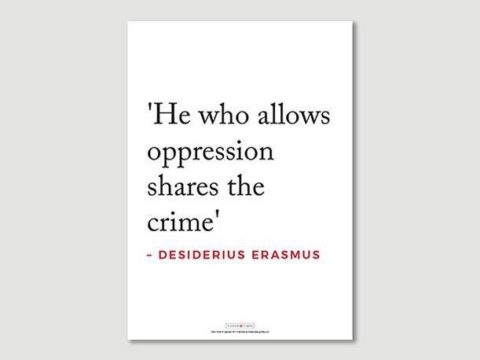Robert Dudley: Life Story
Chapter 11 : The Queen's Wrath
Simier dropped his bombshell in October 1579, and it certainly had the effect of devastating Elizabeth. She was so hurt and angry that she talked of sending Robert to the Tower of London – remembering the rumours about Douglass Sheffield, she wanted her favourite investigated on a charge of bigamy. The Earl of Sussex, no doubt delighted to take a hand against Robert, interrogated Douglass, recently remarried to Edward Stafford. Disappointingly, he was obliged to report that Douglass denied a marriage, saying that she had trusted Robert too much.
Cecil persuaded the queen to accept that Robert had not committed any crime, but she was still incensed. Robert wrote to Cecil, aggrieved at Elizabeth’s attitude. She had refused to marry him, and therefore it was not reasonable for her to prevent him marrying elsewhere:
‘ Her Majesty, I see, is grown into a very strange humour, all things considered, toward me….[he had never stooped to serve her in] ‘any slavish manner to be tied in more than unequal and unreasonable bonds…I carried myself almost more than a bondman many a year together, so long as one drop of comfort was left of any hope,….acquitted and delivered of that hope, and by both open and private protestations and declarations discharged, methinks it is more than hard to take such an occasion to hear so great displeasure for.’
It is easy to see that Robert was between a rock and a hard place – he had wanted to marry the queen, both personally and for ambition, but she had refused. There was no good reason why he could not marry Lettice, whom he also loved. But Elizabeth’s hurt is also understandable. Robert was one of the few people she trusted, and she felt betrayed. She had given him lands, power, and a title – surely, he could have remained devoted to her alone?
Elizabeth continued to be unhappy, although she did not take active steps to deprive Robert of any of the material favour she had given him. She even told Simier that Robert’s opposition to the French marriage had been his genuine advice as her councillor, not motivated by personal feelings. Throughout the spring and summer of that year, Robert was still being harangued by Elizabeth for disloyalty, and Lettice was permanently banished from court.
The queen continued to toy publicly with the notion of a French match, although by mid-1580, it was increasingly unlikely. She hoped to keep the French as potential allies for as long as possible, as the war in the Netherlands was escalating, and Spain had taken control of Portugal, and its empire – King Philip of Spain was the nearest legitimate male heir to the throne of his uncle, the King-Cardinal Enrique.
With Philip’s increased wealth, he was able to continue pouring money and men into the Netherlands, to try to overcome the opposition there. The French, although vigorously persecuting the Huguenots at home, were more than happy to ally with them abroad, and supported rebellion against Spain in the Netherlands. By the Treaty of Plessy-les-Tours of 19 September 1580, Elizabeth’s erstwhile suitor, the Duke of Anjou, was named as Lord of the Netherlands. The thought of the Netherlands in French hands, was almost as bad as them being under Spanish control, and it could not be long, Elizabeth’s ministers, including Robert, thought, before England would be obliged to take a more active role to protect the Dutch Protestants.
Financial support had been sent to the States-General in November 1577, together with a promise of troops, to be led by Robert. Whilst the money was accepted with alacrity, the States-General had been more reluctant to invite an English army to land on their soil. The situation there deteriorated, and the States-General changed its collective mind by the end of 1577, but Elizabeth did not renew her offer of troops – there was dissension amongst the Dutch, and Philip’s generals were having a good deal of success. It would be unwise, Elizabeth believed, to embroil England further. Robert, like many of the council was deeply disappointed – he both hoped for military glory, and to alleviate the sufferings of his fellow-Protestants.
Robert was concerned in the late 1570s about the strength of Catholic feeling that remained in many areas of the country, particularly around his own lands at Kenilworth Castle, in Warwickshire. He wrote to Cecil that ‘Papists were never in that jollity they be at this present time’ since the days of Queen Mary. He advocated a much stronger line against recusants than Elizabeth had been willing to take.
Meanwhile, Spain was being provoked by the antics of Francis Drake and other sea-farers, whose attacks on Spanish shipping were vastly profitable to themselves and their backers (amongst whom was Robert), but which escalated tensions with Spain and damaged legitimate trade. Cecil was so concerned by the enormous haul that Drake captured in 1580, that he tried to persuade Elizabeth to reimburse Spain. Robert, along with Walsingham and Elizabeth’s other great favourite, Sir Christopher Hatton, opposed the notion vigorously – and won.
Relations with Spain worsened – the Spanish were behind insurrection in Ireland, and the English pirates continued to harry Spanish shipping. To counter the Spanish, in April 1581, the marriage between Elizabeth and Anjou was revived. The French commissioners, who came to England that month to complete matters were then astonished by a complete volte-face from the queen. She was worried about a marriage to a Catholic, she told them, and, further, Anjou’s new position in the Netherlands meant that marrying him might endanger the weak peace between England and Spain.
Lord Robert Dudley
Family Tree


